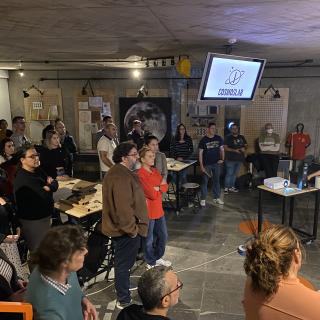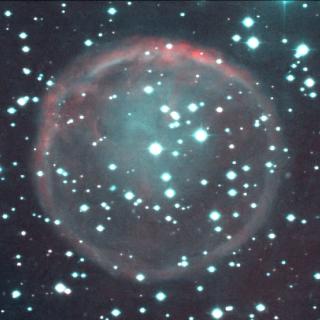Most of the matter in the Universe is thought to be in the form of non-baryonic matter, possibly made of still to be discovered particles. If only gravitational interactions were important in the formation and evolution of galaxies, current theories predict that galaxies should be surrounded by extended spheroids made of dark matter particles (dark matter haloes) having a specific distribution, with densities increasing steeply towards the center.
However, “consensus has been growing that processes due to the baryonic component of galaxies can alter the dark matter distribution, making it less dense in the center.", comment Arianna Di Cintio and Chris B. Brook, astrophysicists at the IAC and ULL.
Analytical calculations and simulations show that, in principle, the energy from explosions of supernovae type II occurring in the cycles associated to the formation of stars can repeatedly push the gas outwards. This would cause a change in the gravitational potential in the central regions of galaxies, modifying the distribution of dark matter, which would become less dense in the central regions.
"It is of crucial importance to tackle how much processes related to the death of stars can affect the properties of the dark matter distribution as this helps the community to test dark matter theories”, say Giuseppina Battaglia, astrophysicist at the IAC and ULL, and José Ramón Bermejo-Climent, doctoral candidate at the National Institute of Astrophysics (INAF) and ex-student at the ULL.
In this work the authors used accurate determinations of the amount of stars formed in the early phases of the life of 16 dwarf galaxies inhabiting our own Local Group of galaxies, which the Milky Way belongs to. "The Local Group -explain Carme Gallart and Matteo Monelli, researchers at the IAC- offers the so far unique possibility of deriving how many stars have formed and died in the history of its galaxies back to the earliest times, because we can study these systems in such an exquisite detail, due to their proximity”.
By calculating the amount of energy associated to massive stars that are expected to have exploded as supernovae type II in the first billions of years of life of these galaxies when the Universe was only at a fourth part of its age, the authors have concluded that, unless more than 90% of this energy radiates away, the observations support the idea that these processes can induce significant changes in the density of the dark matter halo of the galaxies analyzed.
The researchers even dare to forecast which of these systems are the most promising to be studied further. "Among the galaxies that orbit around the Milky Way, we predict that the largest deviations from the initial structure of the dark matter haloes should occur in the relatively bright Sculptor and Fornax dwarf galaxies” state Bermejo-Climent and Battaglia. And they adds: “Whilst the dimmer Draco and Ursa Minor should have been those more able to preserve the initial central densities of their dark matter haloes." Time will tell whether the predictions will come true.
The research in this article has been carried out in collaboration with researchers from the MPIA, Heidelberg (Germany), the Center for Theoretical Astrophysics and Cosmology, University of Zurich (Switzerland), the Institute for Astronomy, University of Edinburgh, (UK) and the Department of Physics, University of Surrey (UK).
Scientific article: J.R. Bermejo-Climent et al. On the early evolution of Local Group dwarf galaxy types: star formation and supernova feedback. Monthly Notices of the Royal Astronomical Society, Volume 479, Issue 2, 11 September 2018, Pages 1514–1527, https://doi.org/10.1093/mnras/sty1651
Contact:
- José R. Bermejo-Climent (bermejo [at] iasfbo.inaf.it (bermejo[at]iasfbo[dot]inaf[dot]it))
- Giuseppina Battaglia (gbattaglia [at] iac.es (gbattaglia[at]iac[dot]es))




